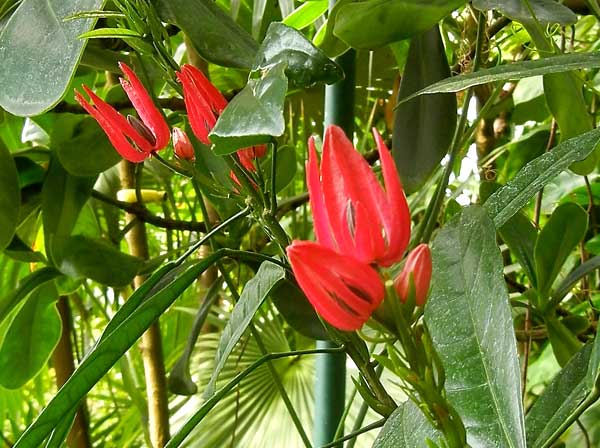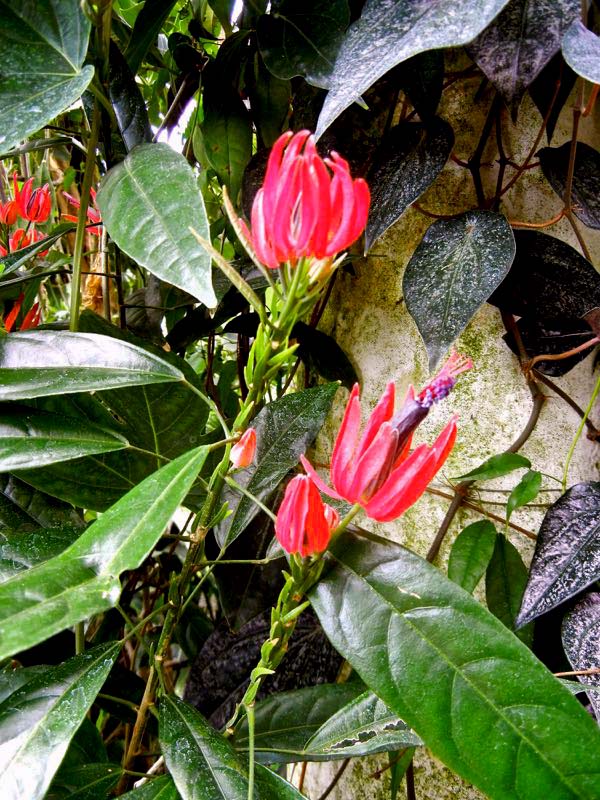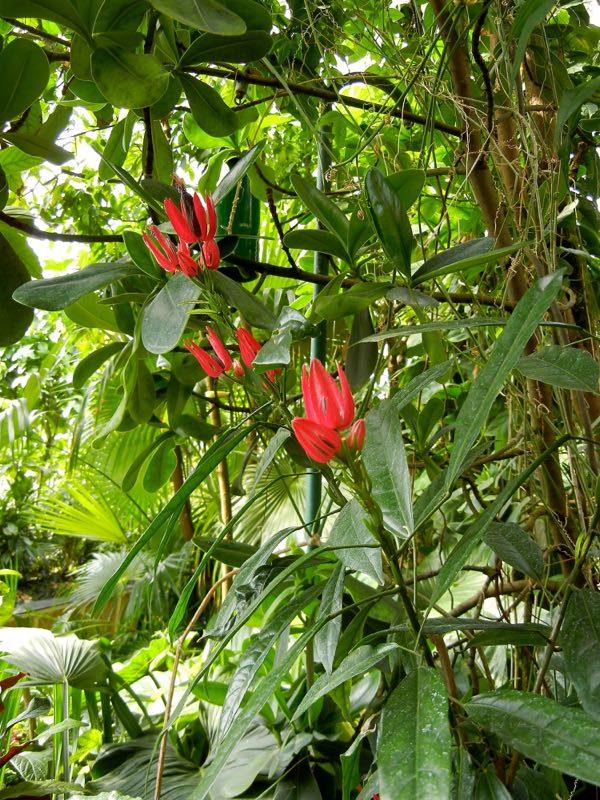Pavonia multiflora is a captivating evergreen shrub native to the lush landscapes of Brazil. They also call it the Brazilian Candles, Many Flowers, or Many Flowered Pavonia. Belonging to the Malvaceae family, this tropical beauty thrives in humid environments and is often cultivated as an indoor plant due to its specific moisture requirements.
One of the remarkable features of Pavonia multiflora is its extended flowering period, which typically occurs from late spring to early autumn. However, with the provision of conditions resembling its native habitat, this plant can exhibit blooms throughout the year, even during the winter months. Standing at an impressive height of around 2.5 meters or 8 feet, Pavonia multiflora displays dark green, lance-shaped leaves with a glossy texture. Its eye-catching bracts range in color from dark pink to red, encircling the cone-shaped purple flowers adorned with striking dark blue stamens.

How to grow Pavonia multiflora:
To successfully cultivate Pavonia multiflora, the following detailed instructions can be followed:
Soil and Potting: Use a well-draining, loam-based potting compost to provide the optimal growing medium for Pavonia multiflora. This ensures proper water drainage while retaining sufficient moisture for the plant’s needs. Select a suitable-sized pot with adequate drainage holes to prevent waterlogging.
Light and Humidity: Place Pavonia multiflora in an area with filtered light to mimic the dappled shade it receives in its natural habitat. Bright, indirect sunlight is ideal for the plant’s growth. Additionally, this species requires high humidity levels to thrive. Consider creating a humid microclimate by placing the plant on a pebble tray filled with water or utilizing a room humidifier. Regularly misting the leaves with water will also help maintain the desired humidity.
Watering: During the active growing season, water Pavonia multiflora generously, ensuring that the soil remains consistently moist. However, avoid overwatering or allowing the plant to sit in standing water. In the dormant period, reduce watering frequency while still ensuring the soil remains lightly moist.
Pruning: As necessary, prune Pavonia multiflora to maintain its desired shape and size. Pruning can also help rejuvenate the plant and stimulate new growth. Remove any dead or damaged branches, and trim back leggy growth to encourage a bushier form.
Pest and Disease Control: While Pavonia multiflora is generally disease-free, it is susceptible to common greenhouse pests such as spider mites and whiteflies. Regularly inspect the plant for signs of infestation, and take appropriate measures, such as using organic insecticidal soaps or horticultural oils, to control these pests.

Propagating Pavonia multiflora:
Pavonia multiflora can be propagated through both seeds and semi-hardwood cuttings. Collect mature seeds and sow them in a well-draining potting mix during the summer months. Alternatively, take semi-hardwood cuttings and root them in a suitable rooting medium. Layering is another propagation method that can be employed for Pavonia multiflora.
The vibrant flowers of Pavonia multiflora act as a magnet for bees, attracting these beneficial pollinators to your garden. Embrace the presence of bees, as they contribute to the ecosystem and aid in the plant’s reproductive cycle.
By following these detailed guidelines, you can successfully cultivate Pavonia multiflora, relishing its lush foliage, mesmerizing blooms, and the tropical ambiance it brings to your indoor garden. Remember to maintain the specific humidity requirements, implement appropriate pruning practices, and remain vigilant against potential pests. With proper care, Pavonia multiflora will thrive and reward you with its exquisite floral display.




